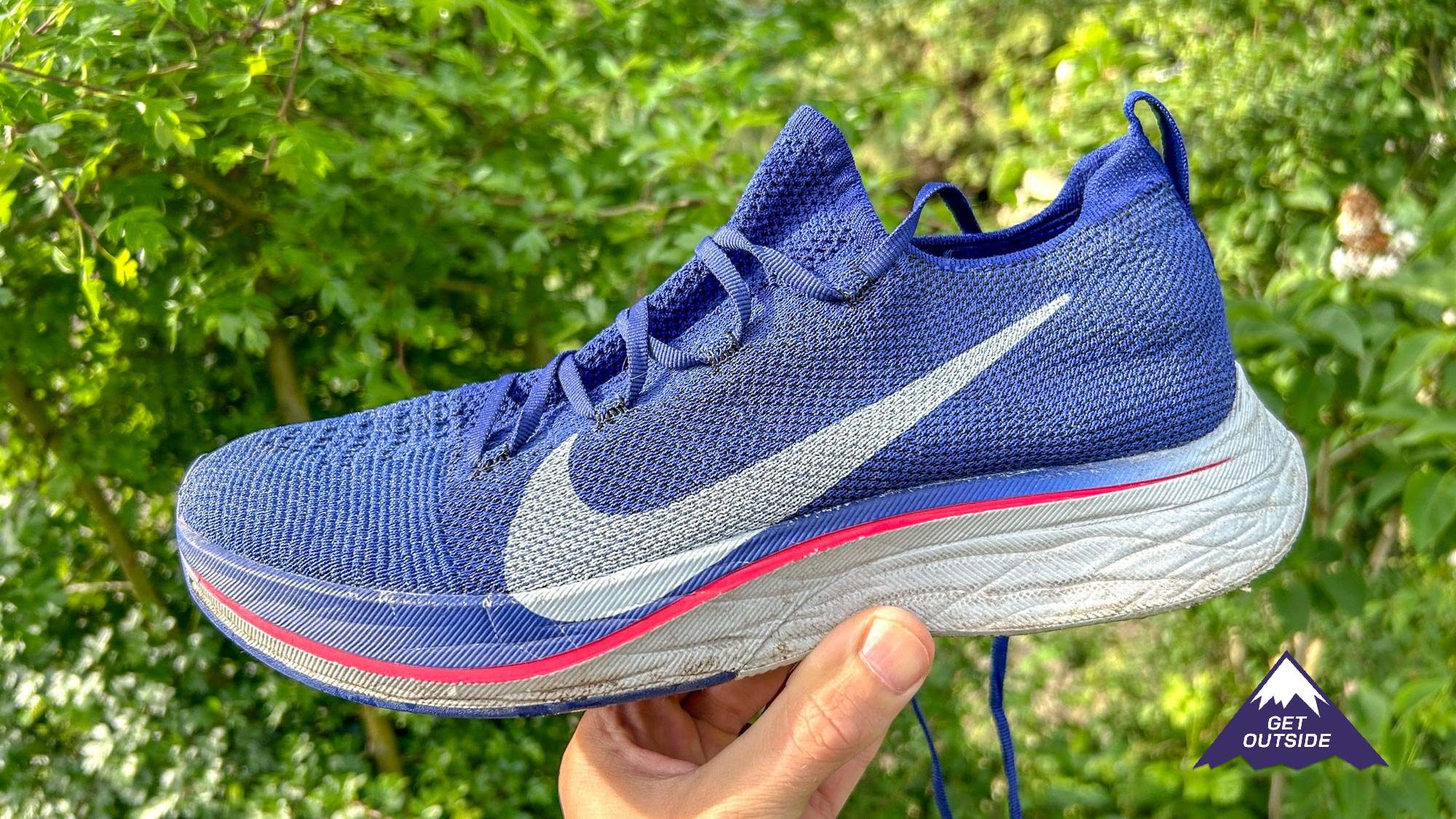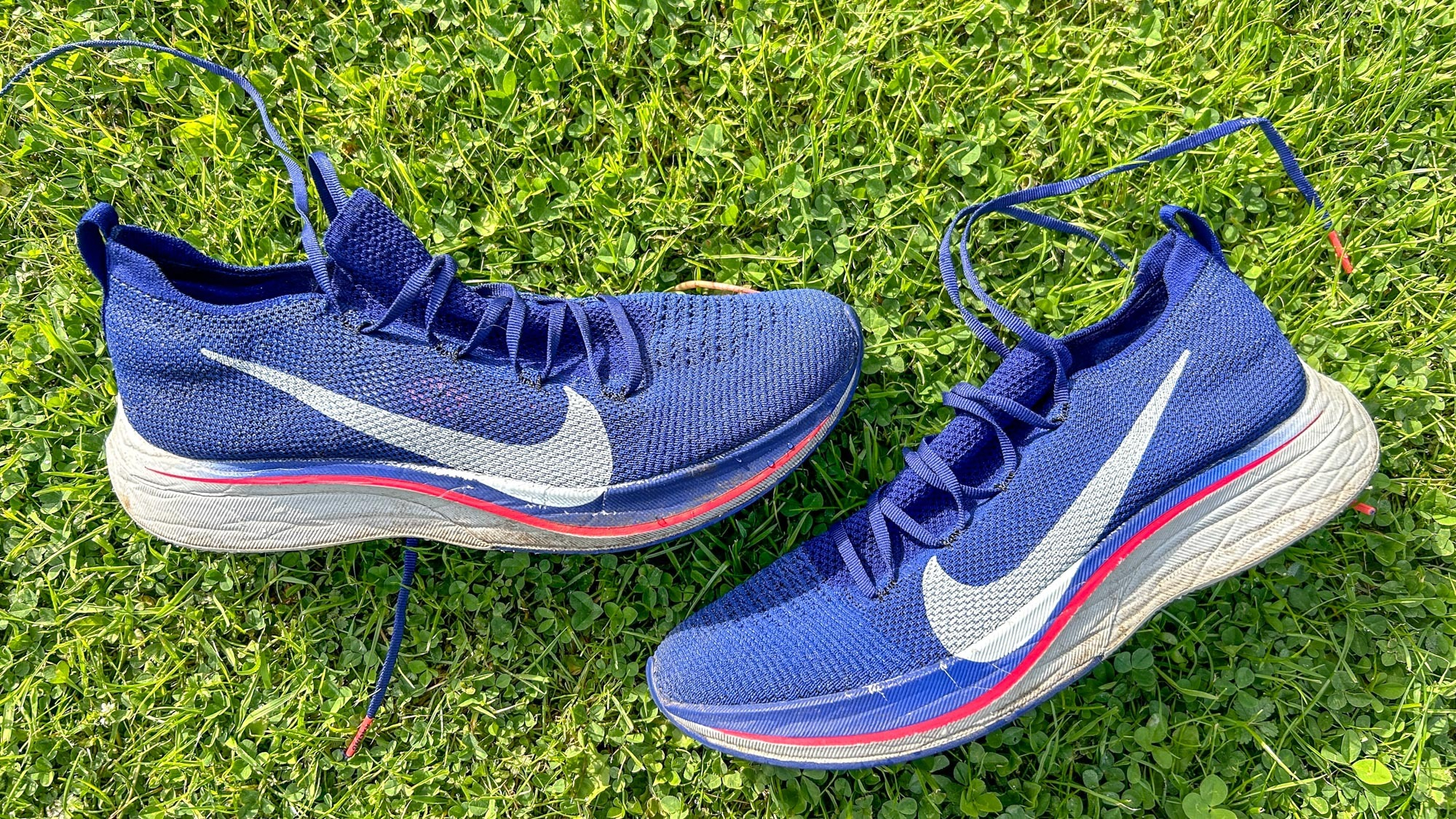
Before the Nike Vaporfly 4% racing shoes were generally low-stack ‘flats’ designed to be very lightweight and not much else.
Nowadays the best carbon plate running shoes are the racer of choice for many runners, and they couldn’t look more different to flats, with high stacks of bouncy foam and a carbon plate running through the midsole.
This seismic change is all down to the Nike Vaporfly 4%, which kickstarted the carbon revolution because of how effective it was in helping runners to move more efficiently and run faster times as a result. It was first sold in 2017, with prototypes of the shoe being used by elites at the Rio Olympics in 2016.
Hundreds of carbon shoes have come out since the original Vaporfly 4%, and the best Nike running shoes now include two carbon plate racers in the Nike Vaporfly 3 and Nike Alphafly 3. The price and stack height of these shoes has risen considerably since the Vaporfly 4%, but have the performance levels also increased significantly?
The Nike Vaporfly 4% challenge
I was keen to find out and still have a relatively fresh pair of Nike Vaporfly 4% Flyknit shoes in my possession.
These were not the very first Vaporfly 4% to be released, which had a mesh upper, but the Vaporfly 4% Flyknit have the same midsole and plate so feel the same underfoot. My original Vaporfly 4% with a mesh upper are far too beaten up to use for a race, unfortunately.
To test out the Vaporfly 4% I raced a 10K in my local league, finishing in 33:09. The course was mostly on an enjoyably flat and smooth bike path, but started with a mile or so on grass and gravel and also finished with a 400m stretch on grass.
Since the Vaporfly 4% came out I’ve tested over 50 carbon plate shoes myself, so how does the original compare to the best racers available today? Here’s what I learned.
The Vaporfly 4% is still very fast

I hit a faster pace in the race than I expected, averaging 5:22/mile, which is a bit slower than my PR pace but speedier than hoped because this was my first race back after a marathon and the course was mixed terrain.
At around 35mm at the heel, the Vaporfly 4% has a lower stack height than modern races, which generally go up to the 40mm limit at the heel set by World Athletics. However, it still has a lot of propulsive foam underfoot along with a carbon plate.
It’s the same Peba-based ZoomX foam Nike still uses on its racing shoes too, and the lightweight design of the Vaporfly 4% helped me to keep my cadence high in the later stages of the race.
It’s not quite as propulsive as many higher stack super-shoes including the Vaporfly 3, but the Vaporfly 4% is still an excellent racer and actually better than some modern super-shoes I’ve tried.
The Vaporfly 4% drop is much higher
The heel-to-toe drop on the Vaporfly 4% is 11mm, which Nike brought down to 8mm when it launched the Nike Vaporfly NEXT%. All the models of the shoe since then have stuck with 8mm, and there are no other carbon plate racers I’m aware of with a drop as high as 11mm.
There is no perfect amount of drop, with some runners preferring higher and some lower or no drop at all, but the trend is to have an offset 4-8mm in carbon plate running shoes, and the higher drop of the Vaporfly 4% was noticeable during the race.
It snapped through onto the forefoot more and I felt like I landed slightly further back on my heels, while lower drop shoes have a more fluid transition from heel to toe.
The Vaporfly 4% is less comfortable
The high drop and 35mm stack height at the heel mean that the Vaporfly 4% only has a stack height of around 24mm at the forefoot, compared to 30mm-plus on most modern super-shoes. This creates a more direct and grounded feel under the forefoot, but is also less comfortable.
While I happily raced marathons in the Vaporfly 4% in the past and it’s certainly much more comfortable than a racing flat, nowadays it feels more like a 5K and 10K shoe compared with many other top carbon plate running shoes, which have more cushioning for the marathon.
Today's racing shoes are more durable

Early carbon racing shoes were famously not very long-lasting, and that’s still the case with some super-shoes today, but for the most part they’re a bit more durable than the Vaporfly 4%.
The minimal rubber coverage on the outsole on the shoe means that there’s a lot of exposed foam that got chewed up a little during the gravel sections of the race I ran, which were not very long at all.
It’s still best to only use any expensive carbon plate running shoe on the road, but some offer more durability, like the Adidas Adizero Adios Pro 3, and the Puma Deviate Nitro Elite 2 has a great outsole that grips well on light trails.
We might never see such a revolutionary shoe again
Before I got my first pair of Vaporfly 4%, I raced in the Adidas Boston, a pretty lightweight and comfortable shoe. From my first run in the Vaporfly 4% it was clear that it was a huge step up in performance — I did a workout I’d done in the Adidas Boston the week before and my heart rate and perceived effort were lower to hit the same pace or faster.
After racing in the Vaporfly 4% again I can say that the difference between it and today’s racing shoes is much smaller than the difference between it and a shoe like the Boston or a racing flat. Carbon plate shoes have continued to improve, but only marginally, there’s not been the jump in performance you got with the Vaporfly 4%.
That’s partly because World Athletics now has rules that limit these shoes — road racing shoes have a maximum stack height of 40mm and can only contain one carbon plate. The controversy created by the Vaporfly 4% led to this — with so many records falling to athletes wearing super-shoes, new rules had to be brought in.
This means brands are now working within constraints, and improving the shoes by making the foam lighter, or bouncier, or changing the geometry of the shoe. The improvements still come — the Asics Metaspeed Sky Paris is the best racer I’ve ever used and came out in 2024 — but I don’t expect another leap in performance like running experienced with the Vaporfly 4%, and it’s still a tremendous shoe today.







